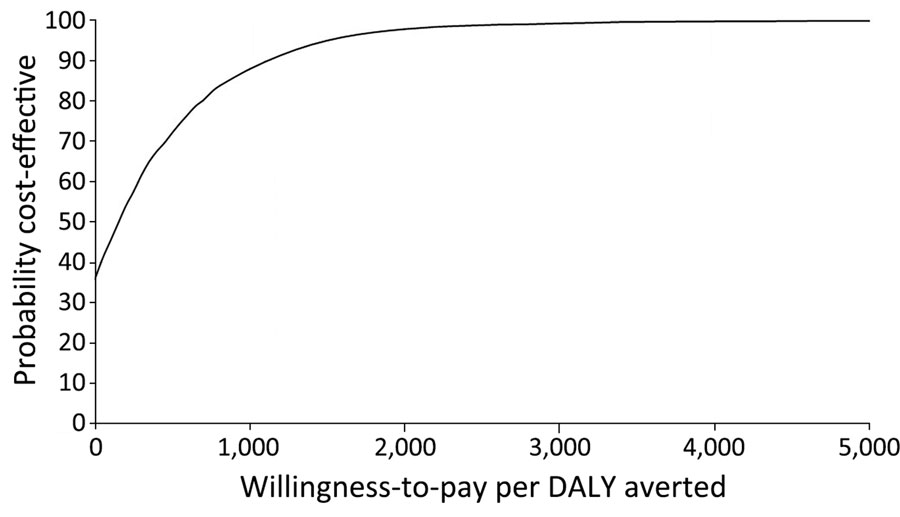Volume 30, Number 12—December 2024
Research
Cost-effectiveness Analysis of Japanese Encephalitis Vaccination for Children <15 Years of Age, Bangladesh
Figure 5

Figure 5. Cost-effectiveness of strategy 1 in cost-effectiveness analysis of JE vaccination for children <15 years of age, Bangladesh. Strategy 1 consisted of a subnational 1-time immunization campaign for children <15 years of age and subnational routine immunization for 9-month-old children over 20 birth cohorts. The subnational approach focuses on 3 divisions with a high number of JE cases: Rangpur, Rajshahi, and Chattogram. This strategy would be considered cost-effective in 99% of simulations at a willingness-to-pay threshold of US $2,400/DALY averted, which is <1 times gross domestic product per capita. DALY, disability-adjusted life year; JE, Japanese encephalitis virus.
1These first authors contributed equally to this article.
Page created: August 29, 2024
Page updated: November 26, 2024
Page reviewed: November 26, 2024
The conclusions, findings, and opinions expressed by authors contributing to this journal do not necessarily reflect the official position of the U.S. Department of Health and Human Services, the Public Health Service, the Centers for Disease Control and Prevention, or the authors' affiliated institutions. Use of trade names is for identification only and does not imply endorsement by any of the groups named above.